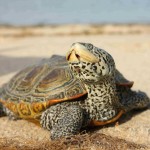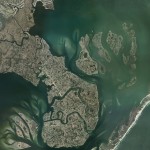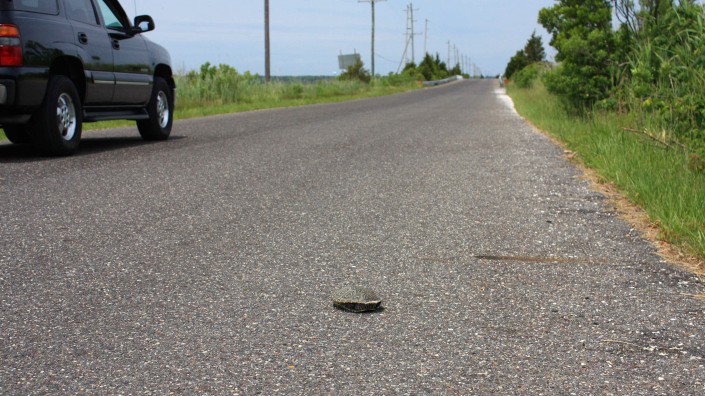Rallying the Troops for North America’s Tiniest Turtle
by Christine Healy, Wildlife Biologist

I recently found myself walking along a set of railroad tracks in Union County, returning to my car after assessing habitat for an upcoming coverboard study. I stepped off the tracks at the sound of an approaching cargo train and prepared to wait it out in silence, when a gentleman appeared from the underside of a bridge a little way up the tracks. He looked like he had been swimming or fishing, though where- I had no idea. Probably in some secret location known only to lifelong residents, keenly aware of what the landscape has to offer, and the many ways in which its changed. When he learned I was a biologist, he proceeded to tell me about all the wildlife that he sees during his various excursions; coyotes, foxes, eagles—but when he got to turtles, his smile faltered, and he lamented the fact that “the Muhlenberg’s have gotten hard to find”. He certainly wasn’t wrong about that.

Plastron length taken using calipers. Photo Credit: Lynn Sambol 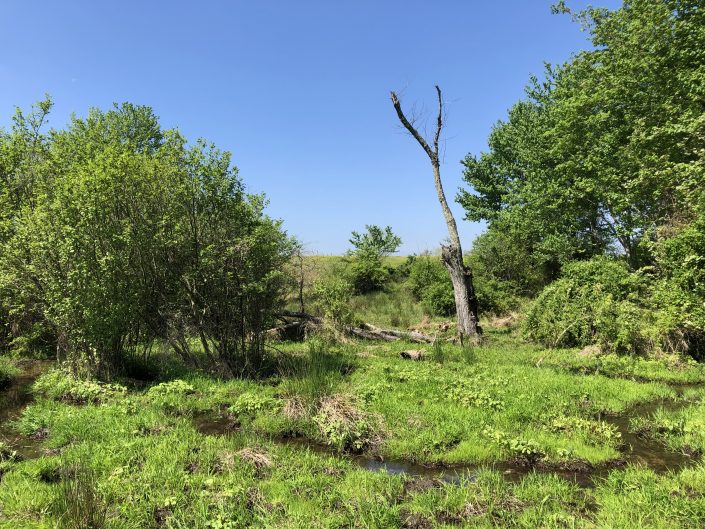
Bog turtle habitat is characterized by open canopy, tussock sedges, mucky soils, and slow-moving rivulets. 
The bright orange/yellow patches on either side of the head, visible here, are the bog turtle’s most distinguishing characters. Photo Credit: Eric Sambol 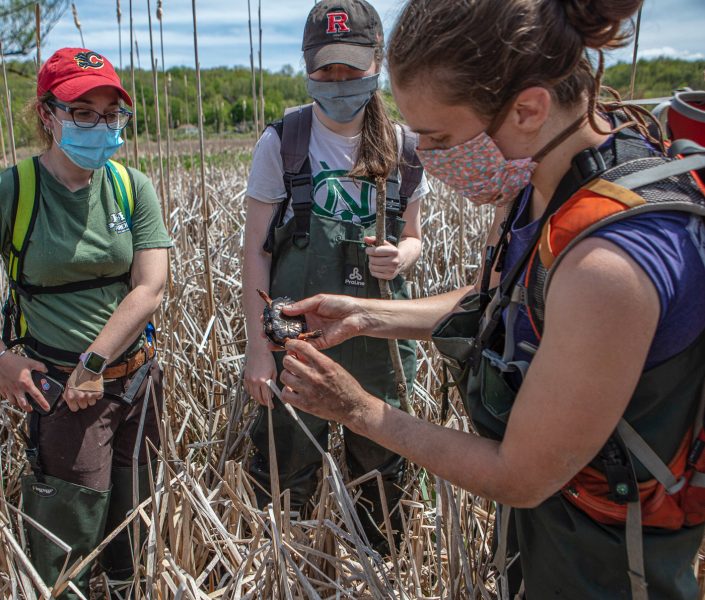
Former CWF biologist Allegra Mitchell (right) teaches CWF intern Nicole Bergen (left) and former assistant biologist Meaghan Fogarty (center) how to determine if a female bog turtle is gravid. Photo Credit: Lynn Sambol
Despite early recognition as an endangered species in New Jersey, population estimates for Glyptemys muhlenbergii, more commonly known as the bog turtle, are less than half what they were in 1974 when they were first listed. This is certainly not for lack of trying; conservation-minded groups and individuals have been working hard to reverse this trend for decades. The bog turtle may be North America’s smallest turtle, but ensuring that they stick around to retain the distinction is no small feat. It takes an army, which is why CWF is so excited to be joining forces with New Jersey Audubon, New Jersey Conservation Foundation, the New Jersey Department of Environmental Protection, and US Fish and Wildlife Service in a 5-year Regional Conservation Partnership Program. Through this agreement, funded by the Natural Resources Conservation Service (NRCS), part of the USDA, we aim to restore crucial wetlands within the Upper Salem River Watershed, an important stronghold of the species.
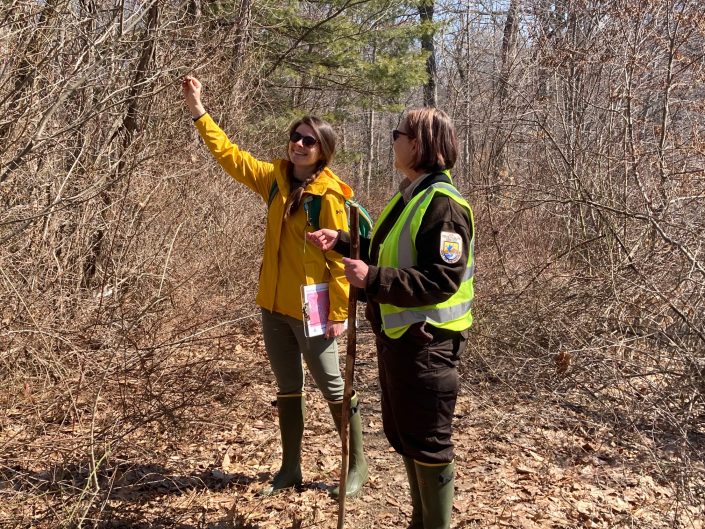
CWF biologist Christine Healy (left) and US Fish and Wildlife Service biologist Beth Freiday (right) assess the restoration potential for historic bog turtle habitat through the FWS Partners Program. Photo Credit: Matthew Davis 
CWF biologist Christine Healy with two bog turtles notched in northern New Jersey during the 2021 field season. Photo Credit: Jim Angley 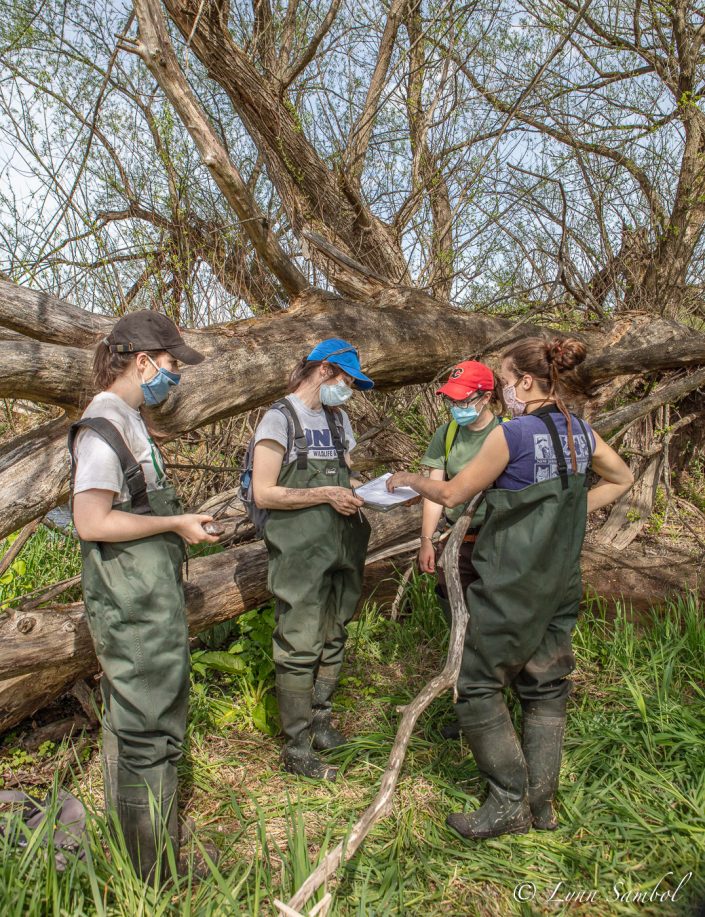
Allegra Mitchell (far right) reviews bog turtle data collection with Meaghan Fogarty, Christine Healy, and Nicole Bergen (far left to right). Photo Credit: Lynn Sambol
CWF’s primary role in this collaboration will be landowner outreach. This is critical work because much of the remaining habitat for bog turtles occurs within the boundaries of private property, so landowner participation is vital to the conservation and management of the species. NRCS and FWS offer several programs to make initial restoration work and land preservation in perpetuity both feasible and economical for landowners, however, they aren’t always widely known options. Using satellite imagery and historic records, CWF helps locate parcels with potentially promising habitat and educates interested landowners on the possibilities. We’ve had much success with this method, particularly in northern New Jersey, and look forward to expanding our reach. With the public on board, we are optimistic about the future of our state reptile.



